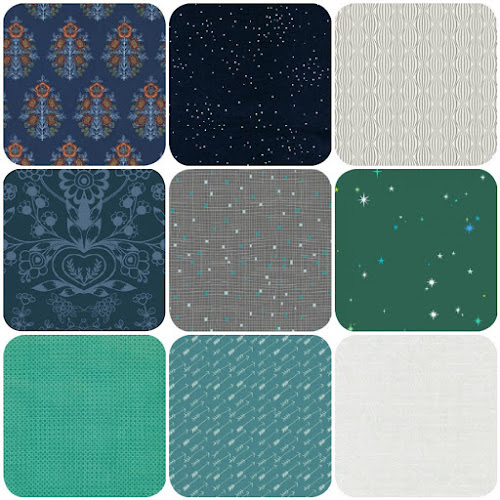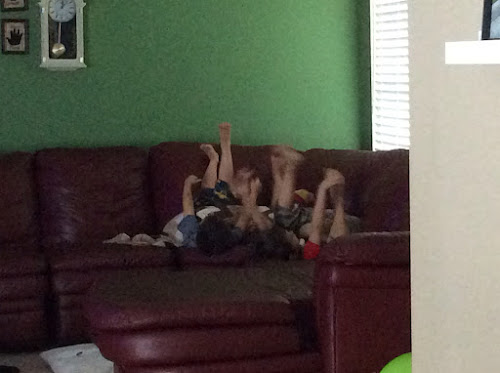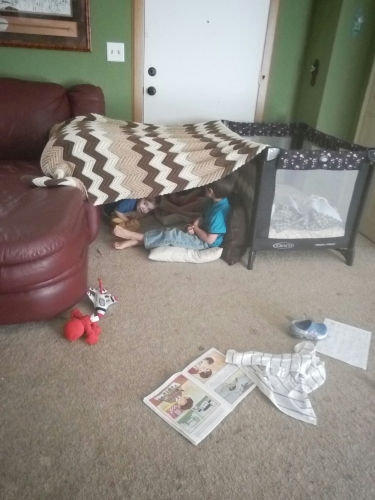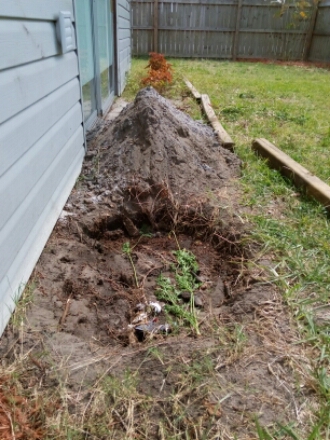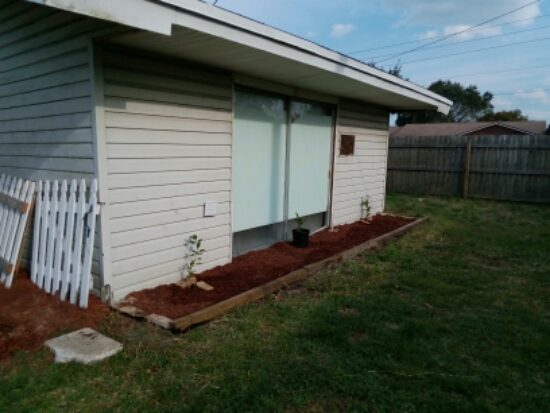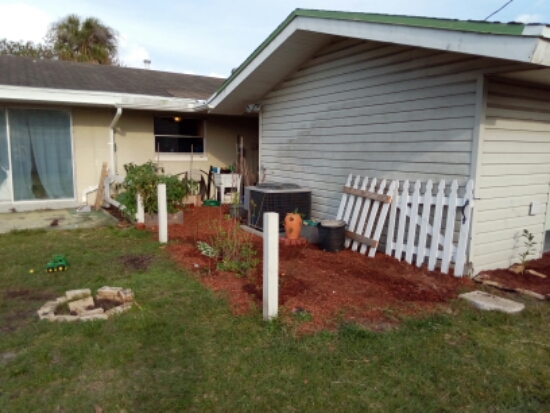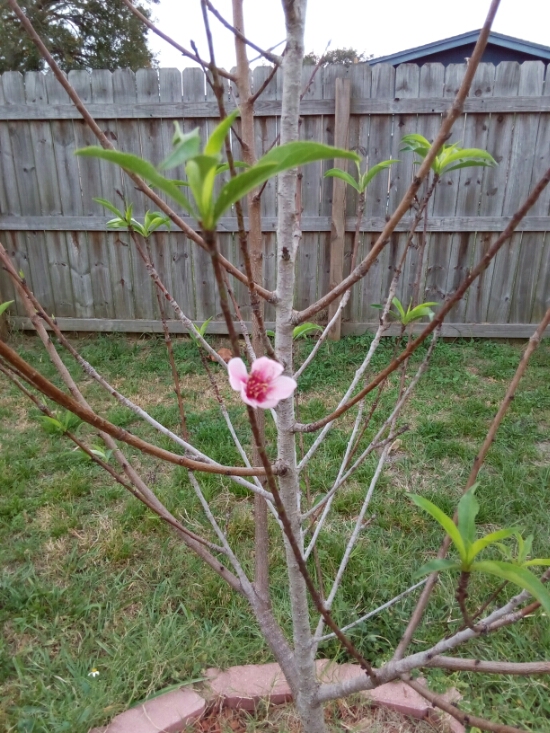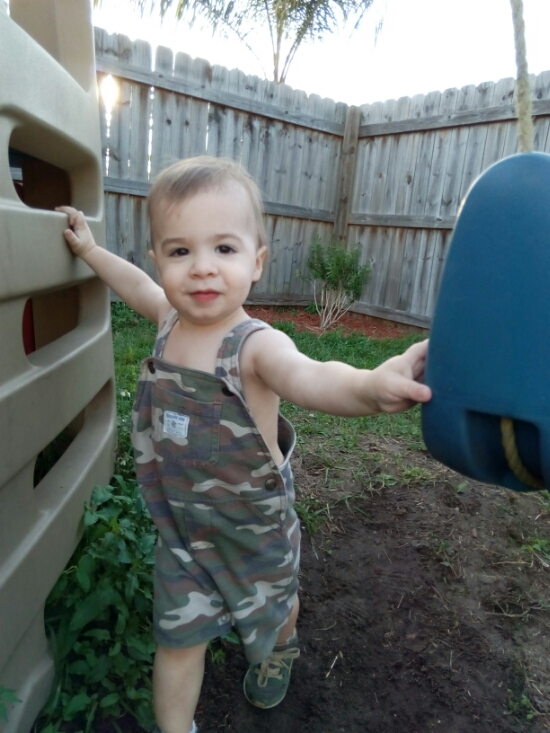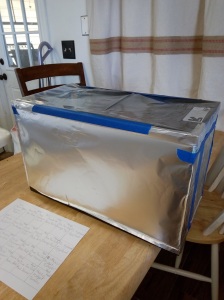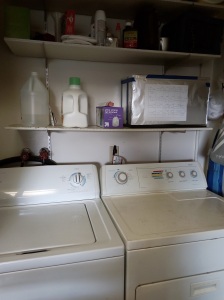It’s been almost a year since I’ve posted about my Vermicomposting experience, so I think it’s time for an update. My little bin has been chugging along nicely and doing quite well. It’s simple, and has been almost fool proof. Over the last year, I’ve made several small harvests and two large harvests of vermicompost from my kitchen bin. The small harvests were because I needed to make some compost tea to fertilize plants, and the large ones were because the worms had converted 90% of their bedding and food into castings. The most recent harvest I made didn’t go as well because I had less fresh bedding available than I realized when I began harvesting. You see, when I set up the bin about a year and a half ago, I had been saving shredded paper for months knowing I’d be setting up a worm bin. I was also able to collect a bag full of crunchy fall leaves and had a starter supply of food ready to go. All that took up about two thirds of the bin and was for only about 10 worms and some cocoons.
When I made the first big harvest six months later, I had a bucket of dried grass clippings and more shredded paper and such ready to go and mixed that with their old unfinished bedding/compost. The worm population had really grown from just those ten worms and I had about two handfuls of worms in the bin.
Well I have learned that few good things on the planet breed like worms. My population of worms is now huge. It’s now so big that the last small harvests I’ve made, I didn’t give too much care to separate all the worms from the finished compost and just mixed them right on in with the peat moss and soil I was adding the compost to for new plantings. Unfortunately, I didn’t have near the amount of bedding my colony now requires. My little bin was only about a quarter full with the new bedding of mostly shredded paper and cardboard mixed in. I soon learned this was a mistake.
You see over the next month, the worms began a massive exodus from their bin in search of a better home. I thought at first they were fleeing from something in the new bedding, but then I realized that the bedding was jam packed full of worms and some of the largest worms were simply looking for more space.
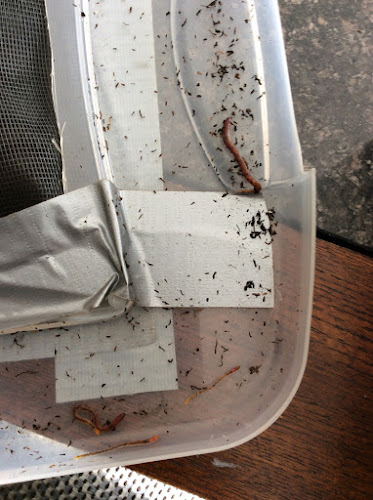
It galled me to think of buying bedding for them, but, eventually, that’s what I ended up doing. Lucky for them, I needed a bale of peat moss for my blueberry bushes and to amend my garden, so I came up with a plan to move worms from old bedding to new with the least amount of effort. I used a small garden hand rake to quickly sort the unfinished bedding from the finished, but didn’t give too much concern at separating the worms from the bedding. Most ran down into the finished castings and away from the light as I sorted and that was good enough for me. I then scooched all the finished compost to one side of the bin and folded a piece of 1/2″ hardware cloth around that part of the bin to keep the castings separate from the new bedding. I mixed up the new peat moss with old water from my fish tank till it was a nice consistency for the worms and put it and some favorite foods (namely banana peels) in the other side of the bin along with a small gob of worms that I’d sorted off from the unfinished old bedding.
 |
| New peat moss bedding |
Then I put the lid on and waited for the worms to migrate from their finished side of the bin to the new side of the bin. I put a light on over the bin for a couple days to encourage them to stay in their home and not go galavanting. I’ve read worms can become a tad disoriented from a big overhaul like this one and their aversion to light can be used to contain them until they acclimate.
 |
| The divided bin |
It’s been two weeks at least since I did all that. I’ve been monitoring the water content of the peat moss which is very dry stuff and I did have to add more water to several times to get it to optimal level. I’ve also been poking around both sides of the bin to see where the majority of the worms seem to be.
 |
| Ready to harvest |
Today I had the easy pleasure of harvesting the rest of the finished vermicompost. All I did was scoop the finished stuff out with my shovel and hand picked a dozen stragglers out of it. Easy as pie. I then pulled out the hardware cloth and filled up the bin the rest of the way with more wetted peat moss.
 |
| Finished vermicompost |
Letting the worms do the traveling from one side of the bin to the other was by far the easiest way to harvest vermicompost. In the future, all I will do is scooch the fished stuff worms and all to one side, insert hardware cloth, add new bedding, harvest two weeks later. It’s fast and easy and saves the worms and owner from the irritation of dumping and sorting.
